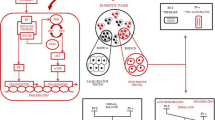Abstract
The sigma 1 receptor (S1R) represents a unique drug-binding site that is distinct from any other receptors. We examined S1R expression in human breast cancer and assessed the activity of S1R ligands in breast cancer cell lines. One-hundred nine breast specimens from normal breast, benign breast disease and cancer were examined with immunohistochemistry or RT- PCR and six different cell lines were also evaluated. S1R mRNA overexpression was detected in 64% of breast cancers compared to normal breast tissue. Immunohistochemistry showed positive epithelial cell staining in 60% of invasive and 41% of in situ cancers, 75% of ductal hyperplasia and in 33% of normal breast. The pattern of expression was more diffuse in invasive breast carcinoma compared to other conditions (p = 0.02). S1R expression was neither a prognostic nor a predictive factor for efficacy of adjuvant chemotherapy but the study only included 58 cancer patients and therefore the statistical power is limited. MDA - MB −361, MDA - MB −435, BT 20 and MCF 7 cells all expressed S1R protein by Western blot. The non-specific S1R ligands haloperidol, reduced haloperidol and progesterone produced a dose-dependent inhibition of the growth at high (>10 μM) concentrations. Reduced haloperidol also showed additive cytotoxic effects when combined with doxorubicin, vinorelbine , paclitaxel and docetaxel in vitro. The S1R-specific ligand, SKF 10047 demonstrated the least growth inhibitory activity and showed no interaction with chemotherapy. These results demonstrate that some normal and most neoplastic breast epithelial cells and cell lines commonly express S1R. High concentrations of haloperidol inhibit the growth of these cells and potentiate the effect of chemotherapy in vitro.
Similar content being viewed by others
References
Hanner M, Moebius FF, Flandorfer A, Knaus HG, Striessnig J, Kempner E, Glossmann H:Purication, molecular cloning,and expression of the mammalian sigma1-binding site.Proc Natl Acad Sci USA 93:8072–8077,1996
Matsumoto RR, Liu Y, Lerner M, Howard EW, Brackett DJ: Sigma receptors:potential medications development target for anti-cocaine agents.Eur J Pharmacol 469:1–12,2003
Quirion R, Bowen WD, Itzhak Y, Junien JL, Musacchio JM, Rothman RB, Su TP, Tam SW, Taylor DP:A proposal for the classi cation of sigma binding sites.Trends Phar-macol Sci 13:85–86,1992
Monnet FP, Mahe V, Robel P, Baulieu EE:Neurosteroids, via sigma receptors,modulate the [3H ]norepinephrine release evoked by N-methyl-D D-aspartate in the rat hippo-campus.Proc Natl Acad Sci USA 92:3774–3778,1995
Urani A, Roman FJ, Phan VL, Su TP, Maurice T:The antidepressant-like effect induced by sigma(1)-receptor agonists and neuroactive steroids in mice submitted to the forced swimming test.J Pharmacol Exp Ther 298:1269–1279,2001
Seth P, Fei YJ, Li HW, Huang W, Leibach FH, Ganapathy V:Cloning and functional characterization of a sigma receptor from rat brain.J Neurochem 70:922–931,1998
Vilner BJ, John CS, Bowen WD:Sigma-1 and sigma-2 receptors are expressed in a wide variety of human and rodent tumor cell lines.Cancer Res 55:408–413,1995
Wilke RA, Mehta RP, Lupardus PJ, Chen Y, Ruoho AE, Jackson MB:Sigma receptor photolabeling and sigma receptor-mediated modulation of potassium channels in tumor cells.J Biol Chem 274:18387–18392,1999
Ela C, Barg J, Vogel Z, Hasin Y, Eilam Y:Sigma receptor ligands modulate contractility,Ca++in.ux and beating rate in cultured cardiac myocytes.J Pharmacol Exp Ther 269:1300–1309,1994
Hayashi T, Maurice T, Su TP:Ca(2+)signaling via sigma(1)-receptors:novel regulatory mechanism affecting intracellular Ca(2+)concentration.J Pharmacol Exp Ther 293:788–798,2000
Brent PJ, Pang G, Little G, Dosen PJ, Van Helden DF:The sigma receptor ligand,reduced haloperidol,induces apop-tosis and increases intracellular-free calcium levels [Ca2+]i in colon and mammary adenocarcinoma cells.Biochem Biophys Res Commun 219:219–226,1996
Crawford KW, Bowen WD:Sigma-2 receptor agonists activate a novel apoptotic pathway and potentiate antineo-plastic drugs in breast tumor cell lines.Cancer Res 62:313–322,2002
Vilner BJ, Bowen WD:Sigma receptor-active neuroleptics are cytotoxic to C6 glioma cells in culture.Eur J Pharmacol 244:199–201,1993
Bowen WD:Sigma receptors:recent advances and new clinical potentials.Pharm Acta Helv 74:211–218,2000
Hellewell SB, Bruce A, Feinstein G, Orringer J, Williams W, Bowen WD:Rat liver and kidney contain high densities of sigma 1 and sigma 2 receptors:characterization by ligand binding and photoanity labeling.Eur J Pharmacol 268: 9–18,1994
Wolfe SA,Jr., Culp SG, De Souza EB:Sigma-receptors in endocrine organs:identification,characterization,and autoradiographic localization in rat pituitary,adrenal, testis,and ovary.Endocrinology 124:1160–1172,1989
Yang ZW, Paleos GA, Byrd JC:Expression of (+)-3-PPP binding sites in the PC12 pheochromocytoma cell line.Eur J Pharmacol 164:607–610,1989
Vilner BJ, de Costa BR, Bowen WD:Cytotoxic effects of sigma ligands:sigma receptor-mediated alterations in cellu-lar morphology and viability.J Neurosci 15:117–134, 1995
Simony-Lafontaine J, Esslimani M, Bribes E, Gourgou S, Lequeux N, Lavail R, Grenier J, Kramar A, Casellas P: Immunocytochemical assessment of sigma-1 receptor and human sterol isomerase in breast cancer and their relation-ship with a series of prognostic factors.Br J Cancer 82: 1958–1966,2000
Chou TC, Talalay P:Quantitative analysis of dose–effect relationships:the combined effects of multiple drugs or enzyme inhibitors.Adv Enzyme Regul 22:27–55, 1984
Berthois Y, Bourrie B, Galiegue S, Vidal H, Carayon P, Martin PM, Casellas P:SR31747A is a sigma receptor ligand exhibiting antitumoural activity both in vitro and in vivo.Br J Cancer 88:438–446,2003
Brent PJ, Pang GT:Sigma binding site ligands inhibit cell proliferation in mammary and colon carcinoma cell lines and melanoma cells in culture.Eur J Pharmacol 278:151–160,1995
Moody TW, Leyton J, John C:Sigma ligands inhibit the growth of small cell lung cancer cells.Life Sci 66:1979–1986,2000
Author information
Authors and Affiliations
Rights and permissions
About this article
Cite this article
Wang, B., Rouzier, R., Albarracin, C.T. et al. Expression of sigma 1 receptor in human breast cancer. Breast Cancer Res Treat 87, 205–214 (2004). https://doi.org/10.1007/s10549-004-6590-0
Issue Date:
DOI: https://doi.org/10.1007/s10549-004-6590-0




